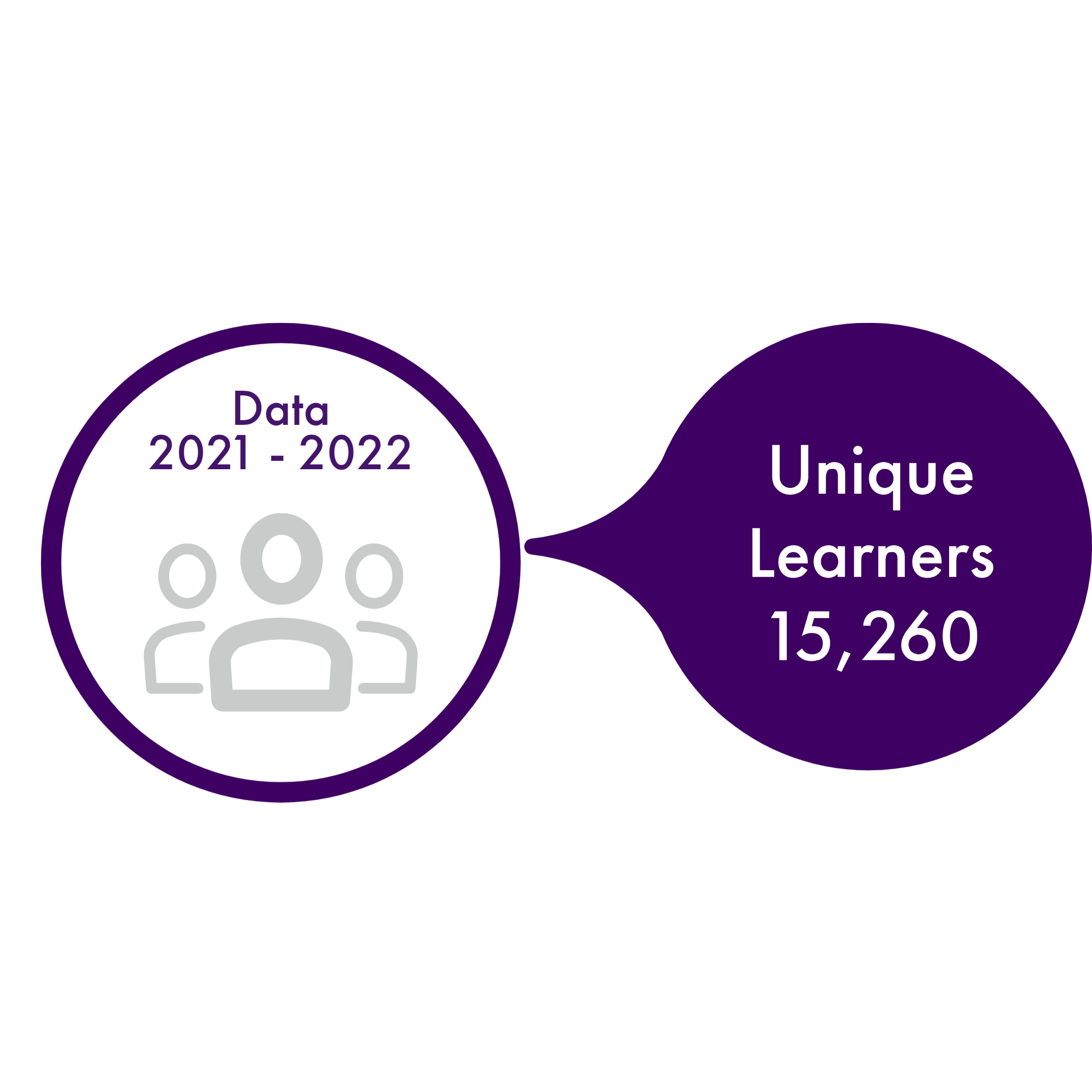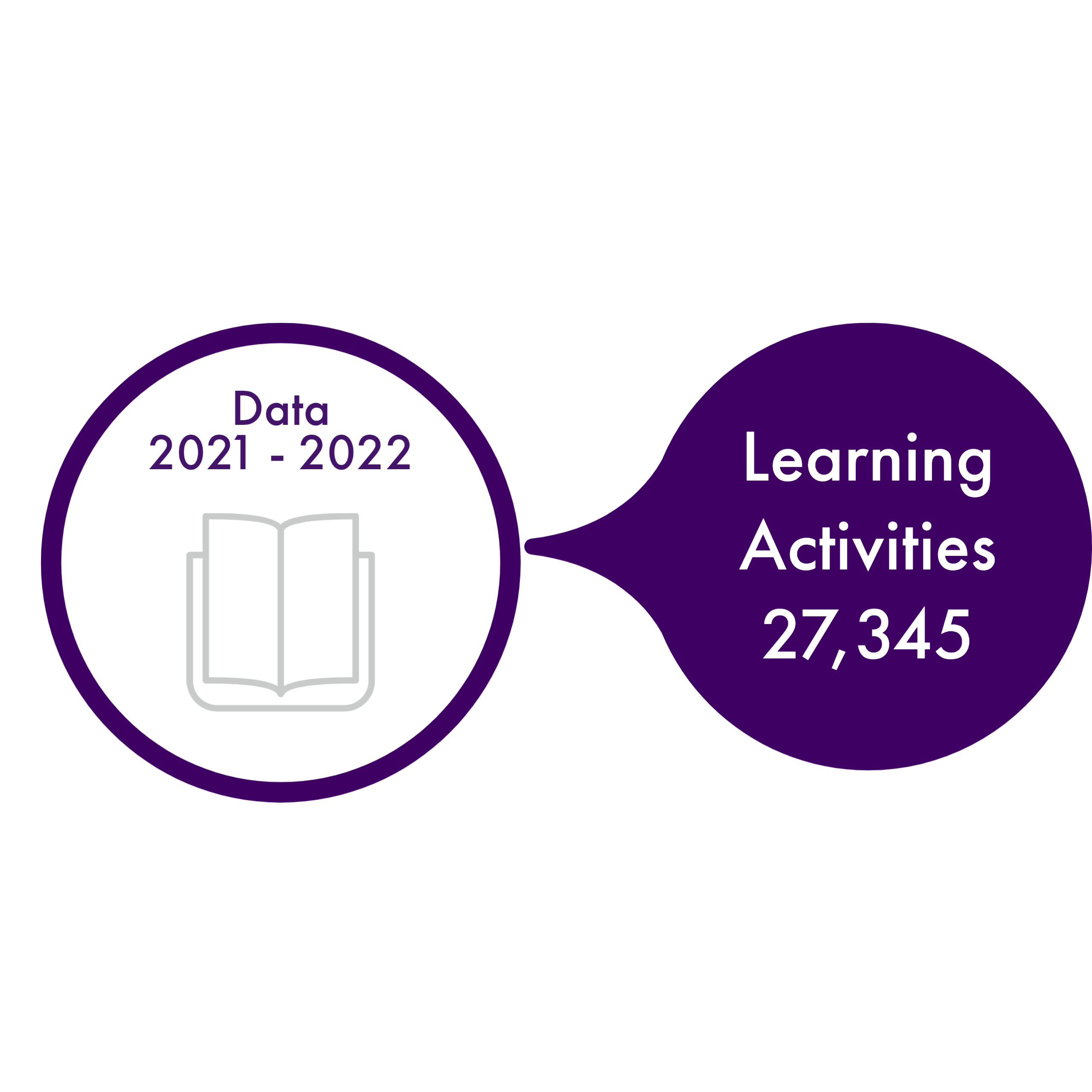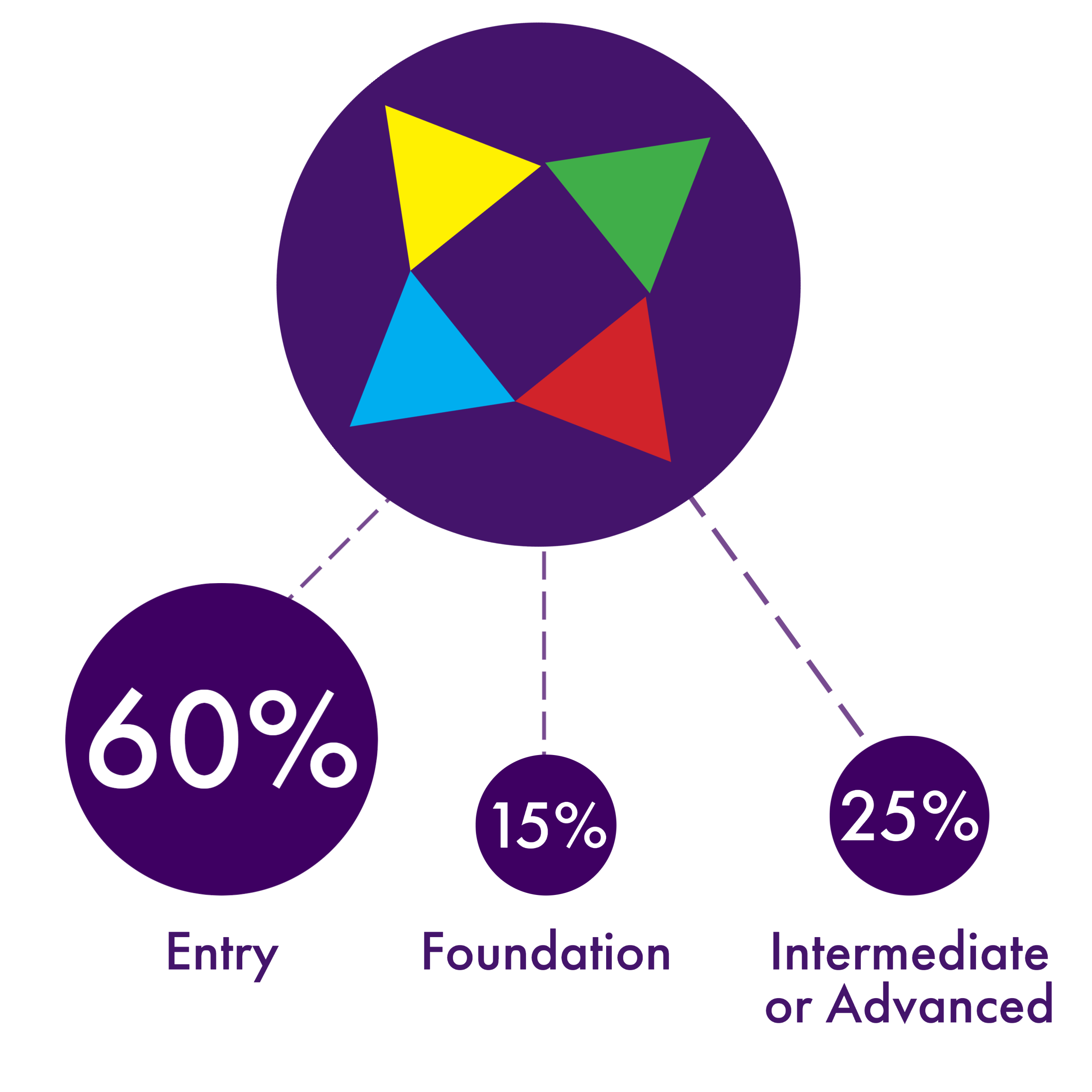The number of unique learners counts every learner only once, regardless of the number of courses they have attended during the year.
- In 2017-2018, there were 12,680 unique learners.
- In 2018-2019, there were 13,260 unique learners.
- In 2019-2020, there were 17,505 unique learners, this is the exceptional year when the number of learners following the taster level self-study courses increased at the start of the pandemic.
- In 2020-2021 there were 14,965 unique learners.
- In 2021-2022, there were 15,260 unique learners, an increase of 2% in comparison to 2020-2021.



